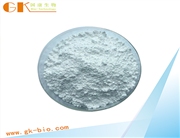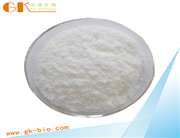[Properties]: The product is white to slightly yellow crystalline powder, odorless or slightly odor, slightly acidic in taste, acidic reaction in the aqueous solution, pH 3.0-4.0 (1%), melting point 234-238°C. It is soluble in boiling water or boiling ethanol, slightly soluble in water, slightly soluble in ethanol, almost insoluble in ethanol, soluble in carbonate solution or alkali solution, and stable in nature.
[Main use]: Niacin belongs to the vitamin B family, and is the general term for all pyridine-3-hydroxy acids and their derivatives with biochemical activity. Niacinamide is its reusable form in animals. Niacin and nicotinamide combine with protein in the body to form a coenzyme, which participates in the body's redox. Niacin is a vitamin with the most satisfactory structure and the most stable physical and chemical properties among all vitamins. It is not easily destroyed by factors such as acid, alkali, moisture, metal ions, heat, light, oxidants, processing and storage.
Niacin and niacinamide have the same vitamin activity. It is a human anti-pellagra factor. If you lack niacin, you are prone to pellagra. In medical treatment, niacin can be used to prevent and treat pellagra, glossitis, stomatitis and other skin diseases. Niacin is also an excellent drug for preventing and treating cardiovascular diseases. It promotes cell metabolism, reduces plasma triglycerides and inhibits the formation of cholesterol. Many of its esters have the effect of lowering blood lipids, and they have long been paid attention abroad. In recent years, niacin has gained greater development as the main ingredient in nutritional medicine, food and feed additives. Niacin in animals mainly participates in body metabolism in the form of coenzyme I (NAD) and coenzyme II (NADP), and plays an important role in animal energy utilization and the synthesis and decomposition of fat, protein and carbohydrates. In general, niacin in diets cannot meet the needs of animals, so niacin is often used as a nutritional feed additive, which can effectively promote animal growth and prevent dysentery.





 China
China

